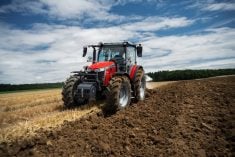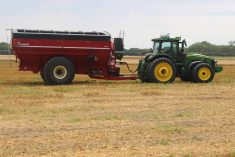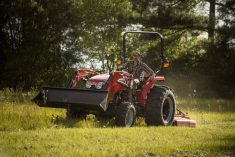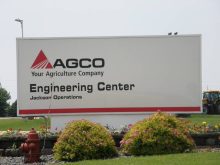Back in March, the federal government announced it was proposing a goal of reducing greenhouse gas (GHG) emissions from the use of synthetic fertilizer on Canadian farms by 30 per cent. While ambitious, it’s much lower than the mandated 55 per cent reduction European farmers are facing.
“The government is focused on meeting this emissions reduction target through a range of policy measures and approaches, such as working with farmers to encourage broader adoption of new products and implementation of beneficial management practices,” states the government announcement. “An important aspect of Canada’s path toward reaching the target while not compromising crop yields will require ongoing support from industry stakeholders.”
To be clear, it’s the unwanted emissions from nitrogen that are targeted for reduction, not the actual amount of nitrogen used.
Read Also
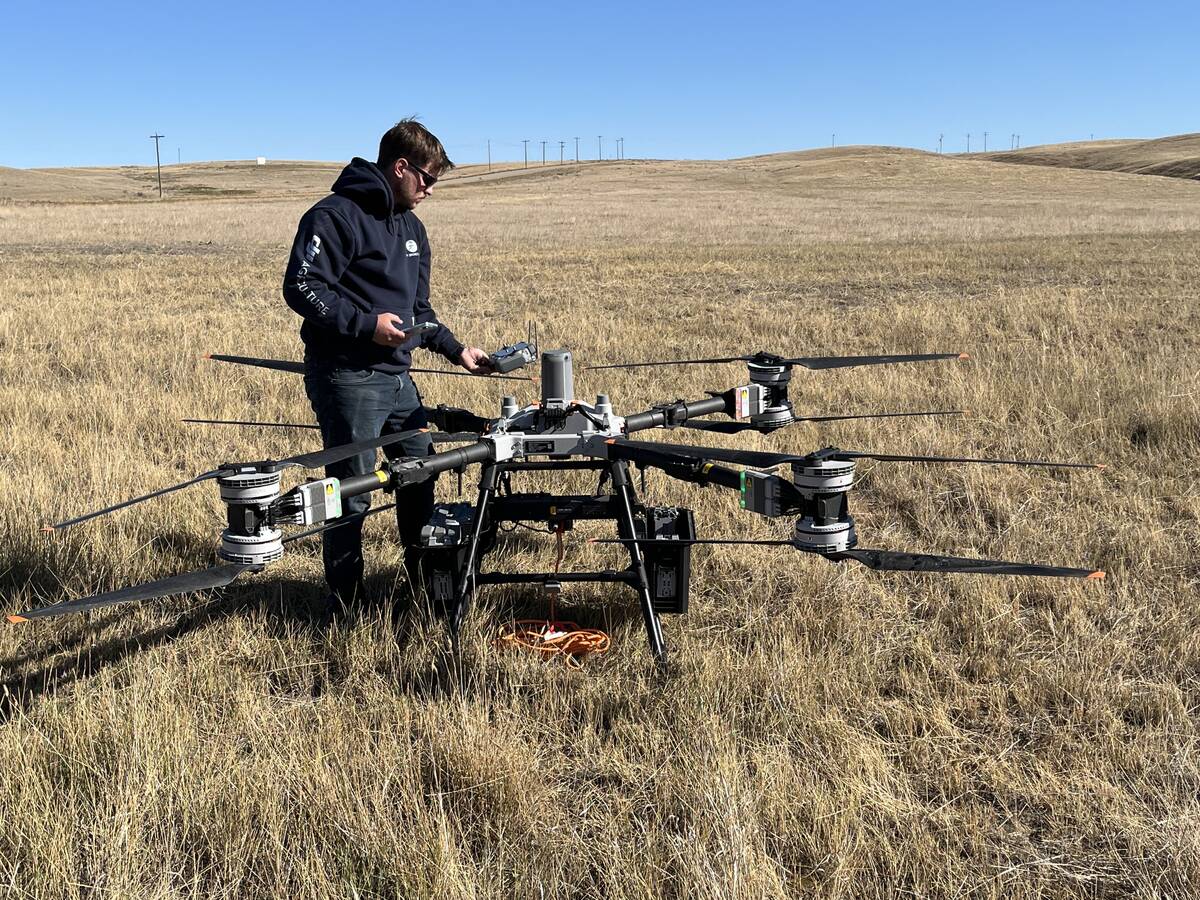
Farm-facing drone does the heavy lifting
Canadian distributor DJI Agriculture unveils its AGRAS T100 drone to western Canada’s producers for greater efficiencies in spraying and granular spreading in fields.
How can farmers reduce emissions without reducing nitrogen use?
As one of those “industry stakeholders” the government mentions, AGCO has an answer to help farmers meet those targets with its suite of precision ag technologies, say company executives. That was the message presented at AGCO’s recent Sustainable Technology Event, which was held in late June at the company’s Fendt assembly plant in Marktoberdorf, Germany.
At that event, executives laid out exactly how the technologies their brand is currently offering — and those it expects to develop in the future — are exactly what will allow farmers to meet ambitious environmental goals that are being enacted or proposed in several western countries. And they claimed use of those precision systems can also boost bottom line farm profits by as much as 20 per cent in the process. A practical demonstration farm near the Marktoberdorf plant is bearing out those claims, according to AGCO.
However, the company realizes at any one time only a small percentage of Canadian producers are in a position to start buying a fleet of new equipment that takes advantage of the best precision technology currently on offer. Therefore, it’s going to focus on retrofit precision systems that can make much of the older equipment already in use on farms more efficient, and at a much lower cost.
They’re (farmers) going to need to make investments to keep up,” said Seth Crawford, AGCO’s senior vice-president and general manager of precision ag and digital. “But not all of them are going to want to sink $500,000 into updating their fleets. Some are going to have $20,000 or $30,000, and they’re going to want products to buy.”
Retrofit options
AGCO plans to have exactly the right retrofit products for those customers to invest in. And it will be possible in most cases to use that technology on a range of equipment from different brands. That, the company expects, will not only be good for farmers, but good for AGCO’s profit picture as well.
“The precision ag business overall, depending on which report you read, is growing somewhere between 10 and 15 per cent (annually),” Crawford said. “Over the last five years, we’ve exceeded that every single year. And we’re going to see more growth.”
It’s no surprise AGCO chose to hold this event at its Fendt plant. It’s positioned that brand as a premium line, offering the best and latest in technology and efficiency.
And when it comes to offering a continuous and evolving supply of new and better precision technology features, AGCO is fuelling most of its free cash in that direction. The company is funding R&D for development of precision products at a rate higher than any other product type. It has also purchased a few smaller companies that had been providing it with the advanced high-tech features it offered in its equipment.
“At AGCO, we now control our destiny when it comes to precision ag,” Crawford added. “We no longer rely on our partners like we did in the past.”
And with those new features becoming available on new equipment as well as a retrofit for older models, AGCO expects to see a nice return on those investments.
“The situation we’re in is farmers are telling us if you don’t put that product on my planter, sprayer, whatever, I’m going to look for another brand.… And it continues to put us in a very nice position to drive growth,” says Crawford.





